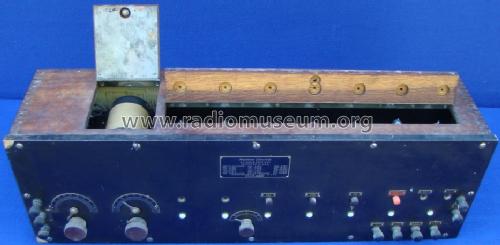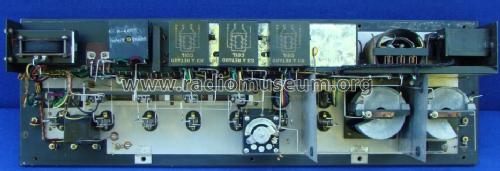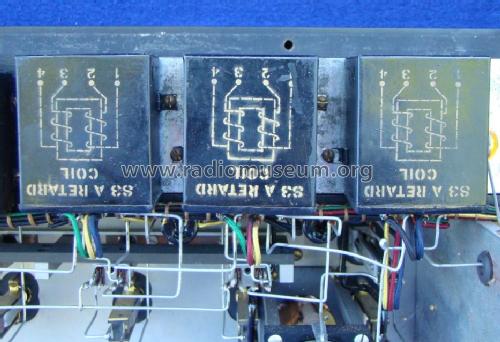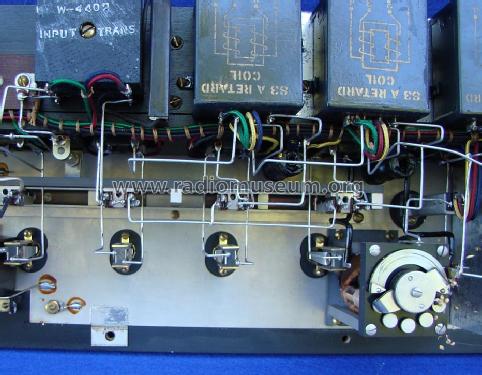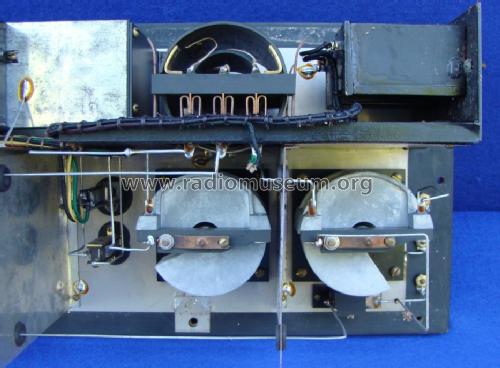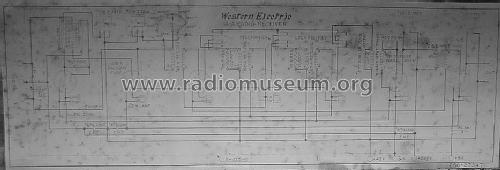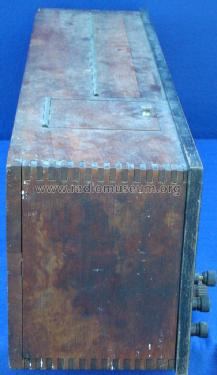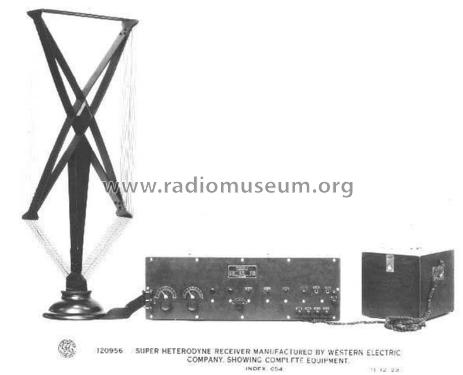- Land
- USA
- Hersteller / Marke
- Western Electric Company Inc.; New York (NY)
- Jahr
- 1922
- Kategorie
- Rundfunkempfänger (Radio - oder Tuner nach WW2)
- Radiomuseum.org ID
- 222014
- Anzahl Röhren
- 7
- Hauptprinzip
- Superhet allgemein; 2 NF-Stufe(n)
- Wellenbereiche
- Mittelwelle, keine anderen.
- Betriebsart / Volt
- Trockenbatterien
- Lautsprecher
- - Dieses Modell benötigt externe(n) Lautsprecher.
- Material
- Gerät mit Holzgehäuse
- von Radiomuseum.org
- Modell: 4-A - Western Electric Company Inc.;
- Form
- Tischgerät, Truhenform, meist mit Deckel (NICHT Schrägpult).
- Abmessungen (BHT)
- 26.75 x 8.75 x 6.75 inch / 679 x 222 x 171 mm
- Bemerkung
- Western Electric 4-A Superheterodyne Receiver designed by Harald Friis. During his career with the Bell System, Harald Friis contributed substantially to almost every aspect of the radio art. His earliest work was on vacuum tube efficiency. He then worked on ship-to-shore radio reception. In the early twenties he built the very first field measuring set, for the 300 to 400 meter range. He also designed the first commercial double-detection or superheterodyne radio receiver, the Western Electric 4A receiver. Double detection means that there are two "Detector" stages: the first one is the mixer (of signal and oscillator frequency), the second one is for demodulation.
- Literaturnachweis
- Radio Manufacturers of the 1920's, Vol. 3 (Page 232)
- Autor
- Modellseite von Alan Larsen angelegt. Siehe bei "Änderungsvorschlag" für weitere Mitarbeit.
- Weitere Modelle
-
Hier finden Sie 171 Modelle, davon 150 mit Bildern und 32 mit Schaltbildern.
Alle gelisteten Radios usw. von Western Electric Company Inc.; New York (NY)






